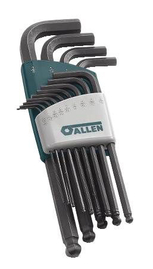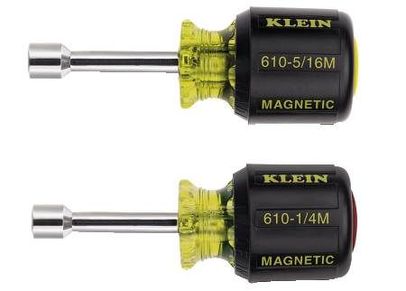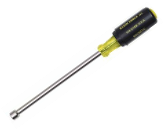- Home
- For the homeowner
- Safety
- Definitions
- Gas furnace
- Some error codes for gas furnaces
- Service sheet for the gas furnace
- gas furnace design
- The gas heat exchanger
- Dangerous conditions in gas furnaces
- Annual service of the gas furnace
- Repair procedures for gas furnaces
- Gas fireplace millivolt systems
- Oil furnace
- Setting gas input
- Quick tips for troubleshooting furnaces
- Troubleshoot
- Operation and troubleshoot furnace by manufacturer
- HVAC war stories blog
- Annual service of an oil furnace
- Oil furnace design
- Oil furnace troubleshoot
- Repair procedures for oil furnaces
- Gas code training
- Piping and connections
- FAG w pilot no fire
- Combustion analysis
- Electric furnace
- Air conditioner
- Refrigeration
- Heat Pump
- Boiler
- Ductwork design and troubleshoot
- Thermostats
- Diagnostic problems
- Tools
- Electric test meters
- Electrical diagram training
- Electrical symbols
- Single and 3 phase power systems
- Electric wiring solutions
- Transformer design and troubleshoot
- Electronic air cleaner
- Blowers and fans design & troubleshoot
- Humidity and humidifiers
- Furnace, Air Conditioner and part manuals
- Electric motors
- Run Capacitors
- Start capacitors
- Troubleshooting the capacitor
- Gas furnace short cycling
Hand tools
Hand tools are the most commonly used of all your tools. They get the most wear, are reached for first and are lost the most.
Drivers like the ones below are used for removing smaller hex head screws.
Drivers like the ones below are used for removing smaller hex head screws.
Nut driver set
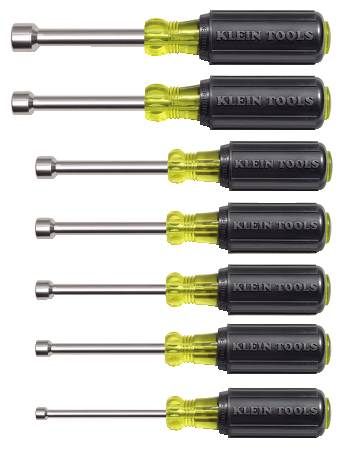
Driver sets are sockets on a screwdriver handle. The sizes are 1/4 to 1/2 inch. The standard set as shown above has a hole in the center for extended bolts. They can be ordered with magnetic centers for holding screws however, then you lose the hole in the center. For some applications, you may need 3/16 inch. You can get some larger sizes, but a socket set may be better due to the need for more torque for larger sizes.
The above driver has 11 tools. It includes Schrader valve core remover/extractor tip, 3/8", 5/16" and 1/4" nut drivers, #1 and #2 Phillips, 1/4" and 3/16" slotted, #1 and #2 square recess.
These tools can be useful when it is convenient to carry one tool. The bits of course are replaceable if they wear. They are also easy to lose. Carry all the drivers as separate tools. The multi driver is just an additional tool.
These tools can be useful when it is convenient to carry one tool. The bits of course are replaceable if they wear. They are also easy to lose. Carry all the drivers as separate tools. The multi driver is just an additional tool.
The hacksaw
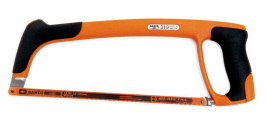
The hacksaw is a basic cutting tool for cutting metals.
The blade of the hacksaw should have the tips facing forward. That may seem simple, but it is commonly mounted backwards.
The number of teeth varies from 14 to 32 teeth per inch.
The lower number of teeth is used for thicker metal with the higher number used for thinner sections. Generally, 14 teeth would be used for over 1/4" thicknesses with 32 teeth for material under 1/8".
When using the hacksaw light down pressure should be placed on the hacksaw on the forward stroke and should be dragged back with no pressure. About 2 strokes per second is the maximum speed. Any faster will wear out or break the blade early.
The blade of the hacksaw should have the tips facing forward. That may seem simple, but it is commonly mounted backwards.
The number of teeth varies from 14 to 32 teeth per inch.
The lower number of teeth is used for thicker metal with the higher number used for thinner sections. Generally, 14 teeth would be used for over 1/4" thicknesses with 32 teeth for material under 1/8".
When using the hacksaw light down pressure should be placed on the hacksaw on the forward stroke and should be dragged back with no pressure. About 2 strokes per second is the maximum speed. Any faster will wear out or break the blade early.
The lowly slot head. Used as a pry bar, a chisel and everything except turning a screw.
At one time, all screws were slot heads. Now they are used much less. The video below explains the use of the slot driver.
At one time, all screws were slot heads. Now they are used much less. The video below explains the use of the slot driver.
The phillips driver
When power drivers became popular, the slot head screw did not work well because the driver tended to slide out of the slot with the higher speed. The phillips driver was self centering and instead of 2 points of contact it had 4. It was much easier to drive longer and larger screws. If it was not held vertical to the it would easily cam out of the screw, but most drivers will not work well if not held vertical. Below is a video on the phillips driver.
The square and torx drivers
The square driver improved on the phillips by holding into the screw better than the phillips. The torx also held in better but improved the torque by using 5 points of contact instead of 4. Of all drivers, I would prefer either the square or torx. The video below covers these drivers.
